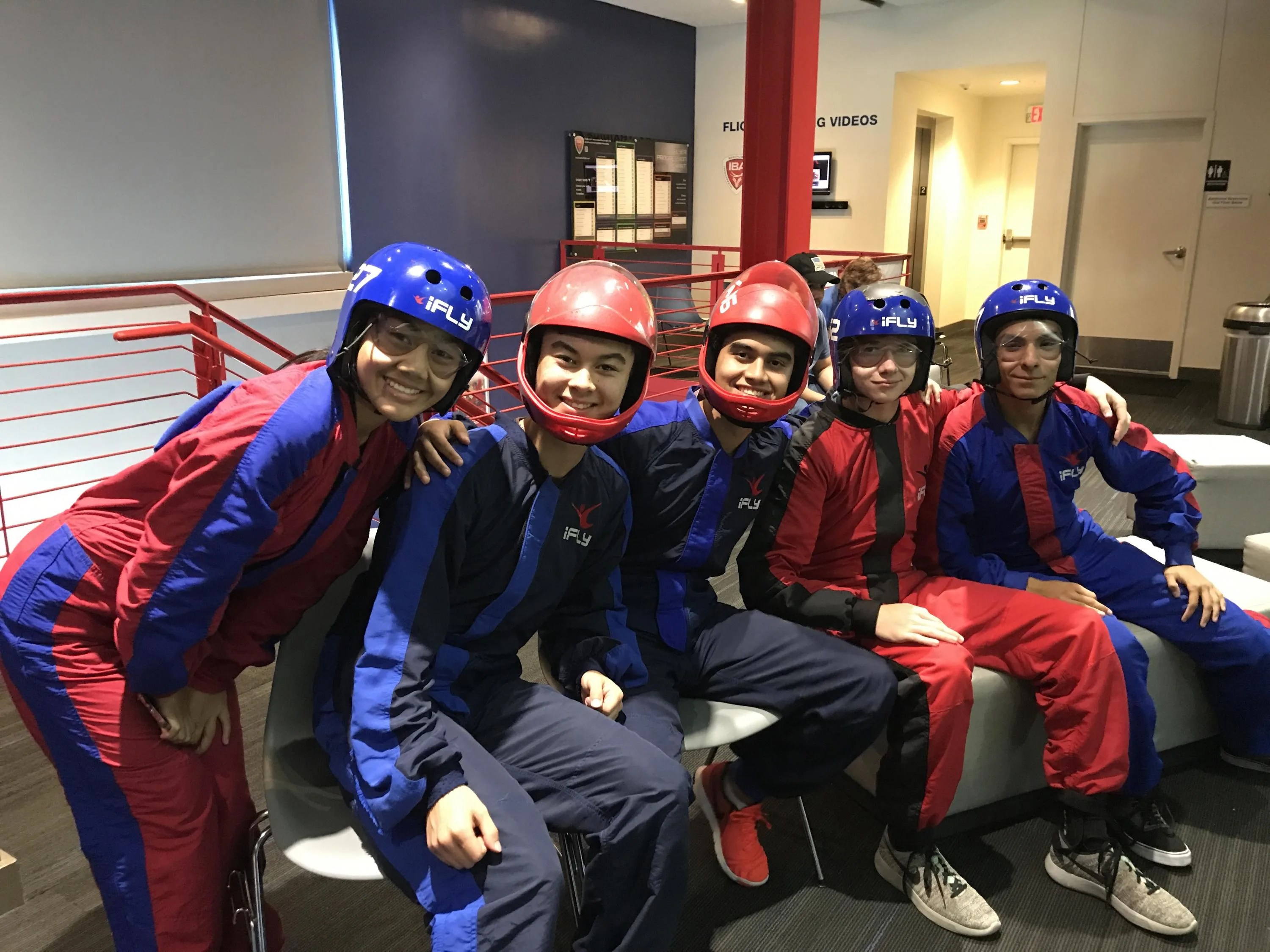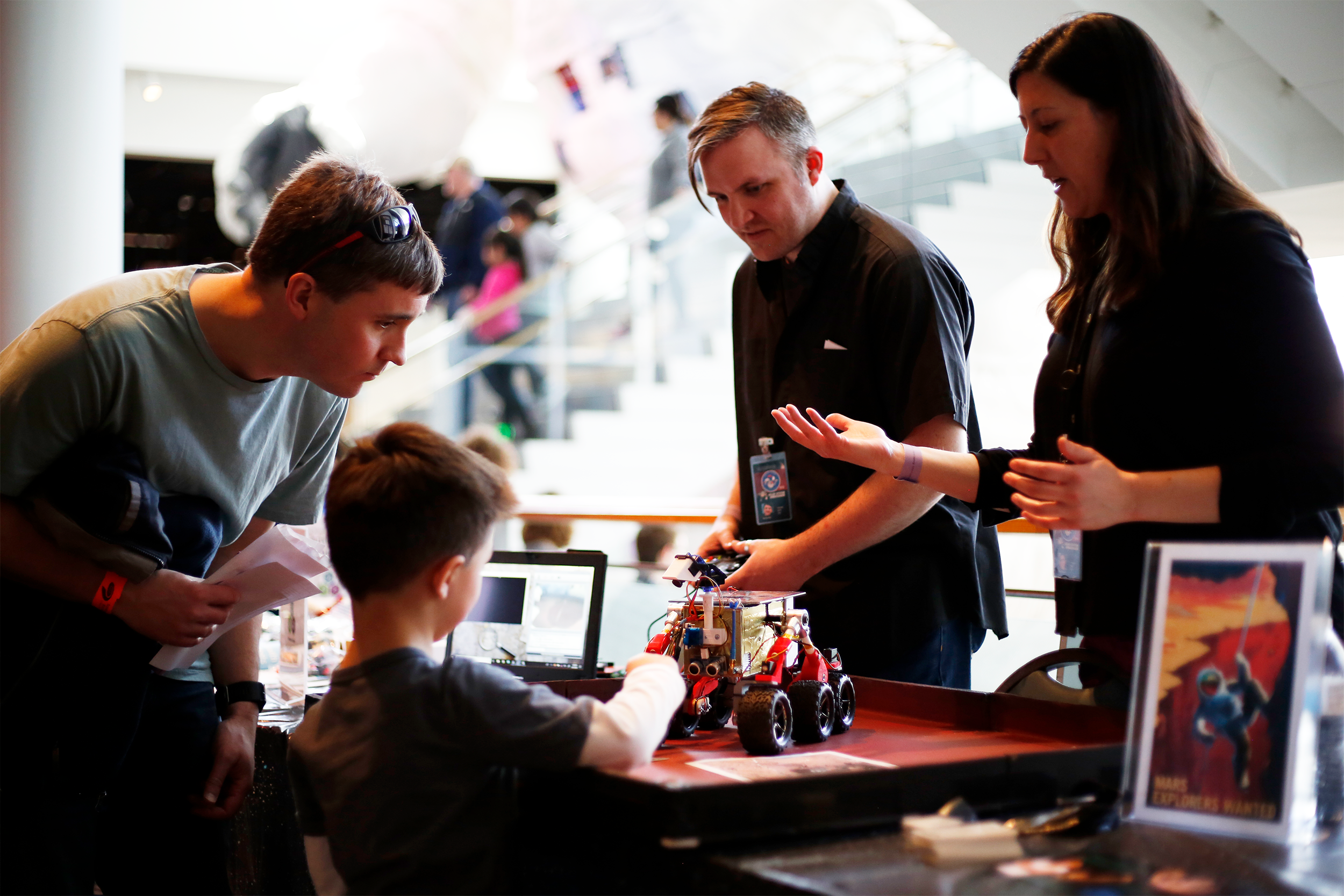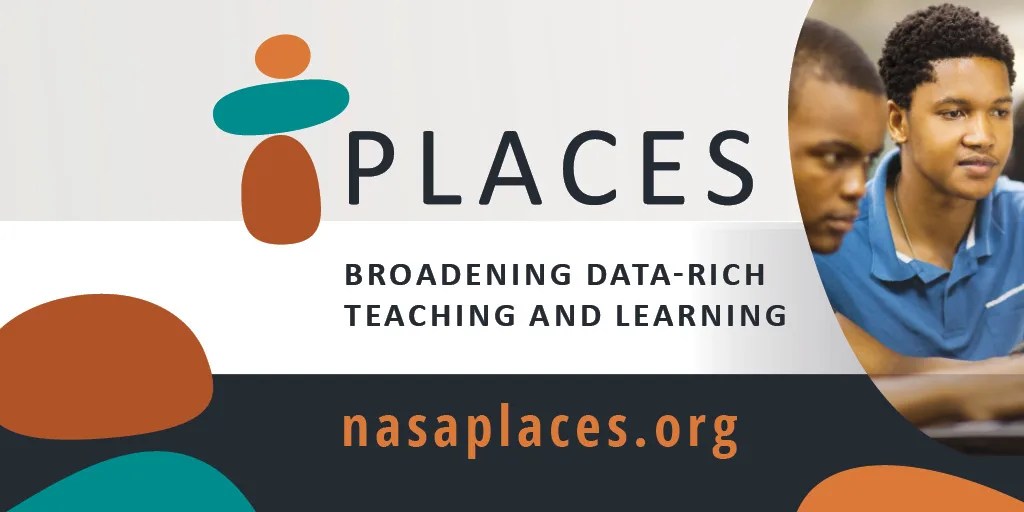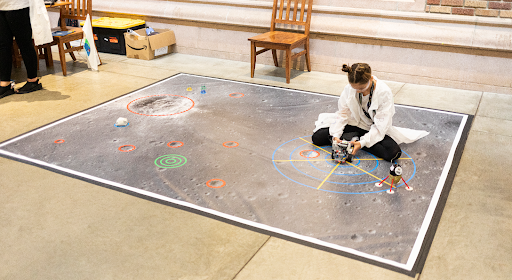NASA Earth Science Education Collaborative
Enhancing STEM teaching/learning by creating engaging, meaningful STEM experiences.
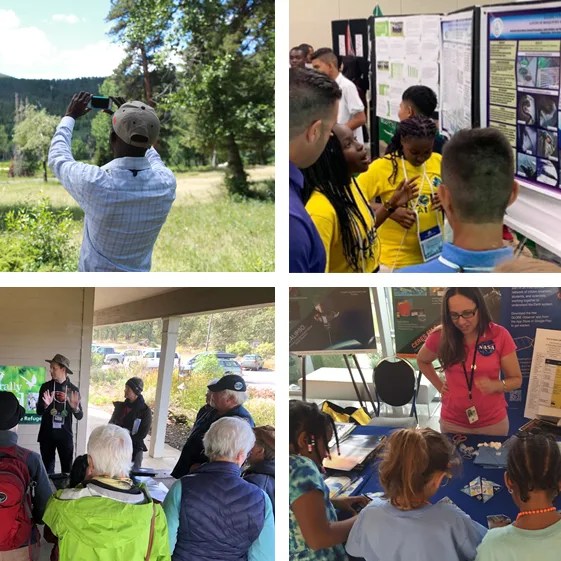
Team Mission
The NASA Earth Science Education Collaborative (NESEC) goal is to enable broad participation in authentic NASA Earth STEM experiences for lifelong learners.
NESEC is led by the Institute for Global Environmental Strategies (IGES) in strong partnership with the world-renowned Earth sciences organizations at NASA’s Goddard Space Flight Center (GSFC), Jet Propulsion Laboratory (JPL), and Langley Research Center (LaRC).
Technology as a tool is incredibly motivating. Having NASA as a learning partner is also a strong motivator. My students rotate through their science investigation teams daily to make sure their cloud and contrail observations are completed with accuracy and that NASA receives the data in a timely manner…. In our second quarter the county assessment testing showed a 76.83% mastery of the objective that we just could not seem to meet before our participation in GLOBE.
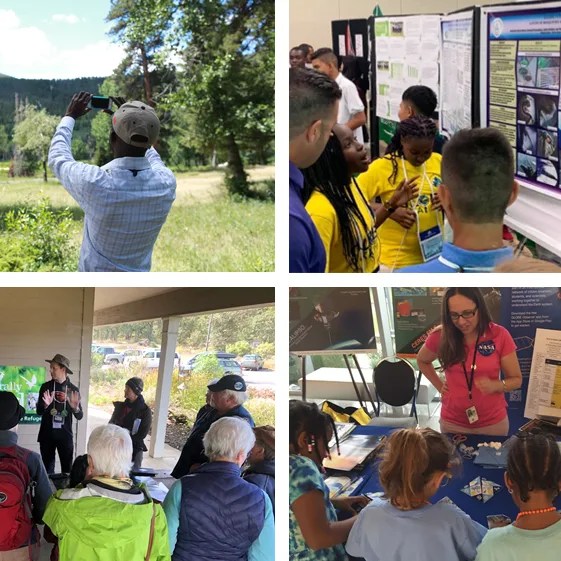
Dr. Caryn Long
Treadway Elementary School, FL
What does your team hope to achieve?
NESEC is enhancing STEM teaching and learning by creating engaging, meaningful, and authentic STEM experiences and resources that 1) are based on NASA Earth science; 2) are tailored to specific audiences based on their needs; 3) as a whole, reach diverse learners throughout their lifetimes; and that are 4) delivered broadly through strategic partnerships.
These activities are designed to align with and further NASA SMD’s top-level objectives for education: Enable STEM Education, Improve U.S. Scientific Literacy, Advance National Educational Goals, and Leverage Through Partnerships.
I feel as though collaboration was really emphasized this summer in a way that I hadn't come across before. By having to compare each assignment to someone else's, I learned new ideas on how to approach the same goal.

High school student
Summer 2019 Mosquito Mappers Virtual Internship
NESEC activities focus on three areas:
- GLOBE Observer citizen science, expanding the international GLOBE Program to out-of-school audiences (informal education and individual citizen scientists) through a free mobile app and supporting resources and experiences. GLOBE Observer currently includes four tools that enable citizen scientists to participate in NASA science: Clouds, Mosquito Habitat Mapper, Land Cover, and Trees. It also includes a temporary Eclipse tool that is opened when there is a total solar eclipse, including the 2017 total solar eclipse across North America, the 2019 and 2020 total eclipse in South America, and the April 2024 total solar eclipse in North America.
- Student Investigations with NASA, creating opportunities for authentic science engagement with NASA science, data, and subject matter experts. These include student research, field campaigns, and data challenges: GLOBE Clouds, U.S. Air Quality; Trees Around the GLOBE; and GLOBE Mission Mosquito.
- Strategic Partnerships and Collaborations, Reaching diverse audiences through strategic partnerships and collaborations with a wide range of organizations to engage in NASA Earth science, including other SciAct Awards and infrastructure projects, and external partners including Odyssey of the Mind, SciStarter/Girl Scouts, Lewis and Clark National Historic Trail, Smithsonian Institution, and local partnerships with universities, libraries, museums, and science centers.
The interaction of kids with their environment really set them up to feel like they were part of something big.

NESEC Library Partner
Project Web Site
Publications
Kohl H. A., et al., 2021. GLOBE Observer and the GO on a Trail Data Challenge: A Citizen Science Approach to Generating a Global Land Cover Land Use Reference Dataset. Front. Clim. 3:620497. doi: 10.3389/fclim.2021.620497
Fischer, H., Cho, H. and Storksdieck, M., 2021. Going Beyond Hooked Participants: The Nibble-and- Drop Framework for Classifying Citizen Science Participation. Citizen Science: Theory and Practice, 6(1), p.10. DOI: http://doi.org/10.5334/cstp.350
Campbell, B., (2021). ICESat-2 and the Trees Around the GLOBE student research campaign: Looking at Earth's tree height, one tree at a time. In Acta Astronautica, Volume 182, Pages 203-207
Schwerin, T.G., Fischer, H.A., and Mortimer, H. (2020). Engaging Families with GLOBE Observer. Connected Science Learning, Volume 2, Issue 4.
Amos, H. M., et al., (2020). GLOBE Observer data: 2016–2019. Earth and Space Science, 7. https://doi.org/10.1029/2020EA001175
Colón Robles, M., et al., (2020). Clouds around the World: How a Simple Citizen Science Data Challenge Became a Worldwide Success. Bull. Amer. Meteor. Soc., 101, E1201–E1213, https://doi.org/10.1175/BAMS-D-19-0295.1.
Low, R. (2020), Zika Zine: A Resource Promoting the Integration of STEAM and Literacy in the Classroom. The Earth Scientist 36(1): 6-8.
Boger, R., Low, R., and Nelson, P., (2020). Identifying hurricane impacts on Barbuda using citizen science ground observations, drone photography and satellite imagery. Int. Arch. Photogramm. Remote Sens. Spatial Inf. Sci.; Copernicus. DOI:10.5194/isprs-archives-XLII-3-W11-23-2020
Muñoz, J.P., Boger, R., Dexter, S., and Low, R. (2019) Mosquitoes and Public Health: Improving Data Validation of Citizen Science Contributions Using Computer Vision In N. Wickramasinghe and F. Bodendorf (Eds), Healthcare Delivery in the Information Age Series.
Dodson, J.B., Colón Robles, M., Taylor J.E., DeFontes, C.C., Weaver K.L., (2019). Eclipse Across America: Citizen Science Observations of the 21 August 2017 Total Solar Eclipse. Journal of Applied Meteorology & Climatology, https://doi.org/10.1175/JAMC-D-18-0297.1.
Colón Robles, M., Bouwman, J., and Smith-Long, C., (2019). Integrating Tech: Making Science Come Alive With Clouds. NSTA Science Scope, vol. 43, no. 4, November 2019. pp. 8-12.
Weaver, K., Davis A., and Giddens, J., (2019). Can an App Change How You See the World? GLOBE Observer for Interpreters. Legacy: The Magazine of the National Association for Interpretation, vol. 30, no. 5, pp. 20-23.
Weaver, K., Kohl, H., Martin, A., & Burdick, A., (2019). How Cool Was the Eclipse? Collecting Earth Science Data with Citizen Scientists and GLOBE Observer. In S.R. Buxner, L. Shore, & J.B. Jensen (Eds.), Celebrating the 2017 Great American Eclipse: Lessons Learned from the Path of Totality (pp. 511-524). San Francisco: Astronomical Society of the Pacific Conference Series.
Aïkpon R., Klotoé J., Dramane G., Brettenny M., Lawani Y., (2019). Larval breeding characteristics and distribution of Aedes mosquito species in the economic capital of Benin: A public health concern. International Journal of Entomology Research, 4(3):57-62.
Hayden, L., Taylor, J., and Colon Robles, M., (2019). GLOBE: Connecting a Community of Observers Directly to NASA Satellites. IEEE Geoscience and Remote Sensing Magazine, 7(1), 98-99. doi:10.1109/MGRS.2019.2891930
Burck, L. and Soeffing, C. (2019). Phenomena-Based Student Investigations with NASA Earth Observations. The Earth Scientist, Winter 2019, 26-34.
Muñoz, J.P., Boger, R., Dexter, S., Low, R., and Li, J., (2018). Image Recognition of Disease-Carrying Insects: A System for Combating Infectious Diseases using Image Classification Techniques and Citizen Science. The Hawaii International Conference on System Sciences (HICSS-51), Waikoloa HI.
Kar, K. and Low, R. (2021). The effect of poverty on mosquito-borne illness across the United States. Journal of Emerging Investigators, 3, 1-7.

